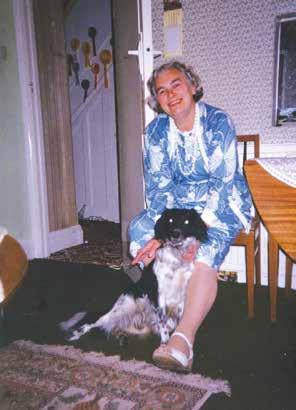
4 minute read
Health & Beauty
How to REALLY wash your hair
• Before washing, thoroughly brush your hair, taking your brush through the areas underneath your hair where friction can occur from scarves and coats. • Thoroughly wet the hair – soaking the hair will
Advertisement
help product evenly spread. Water temperature should not be too hot or too cold, but a tepid temperate to prevent activation of the sebaceous glands. Start soaking the hair around the hair line, going from one side to side. Then work into the crown area eventually going down the hair. Get rid of any excess moisture before shampooing, as this will prevent the shampoo from becoming diluted. • Time to shampoo – use a small amount of product and work this through your hands before running through your hair. Start with the hairline first before taking your hair into a ponytail and running the shampoo through this. • Use a technique called “rotary” – using tips of
fingers and thumbs, start at hair line and work the product down to the top of the ears and behind, going back up and then repeating the motion three times. Use same technique in centre of the hair and work to the crown (repeating three times), and the same to in the main hair area up, eventually using the wider parts of your hands.
• You will not see much lather from the
shampoo, but this is okay – the first shampoo
removes excess dirt, pollution and product build-up.
Add a little more water and start the shampooing process again and remove excessive product.
Particular areas to focus on are behind the ears and neck as these areas are often missed.
• Once shampooed, dry off the hair and then
condition – use a small amount of conditioner and work it into the hands, focusing on the mid-length to end of the hair first. Bring your hair into a ponytail and work the product in. Once applied, bring your hair into a ponytail, and brush your hair down gently to allow your conditioner to work through the hair and for all the active ingredients to really soak in. Leave your conditioner in the hair for a few minutes so it receives all its benefits before rinsing. • When drying hair, use a towel which is not too old and is still quite soft and wrap it around your hair gently. Firmly press onto the towel so it can soak up all moisture from the hair. Do not rub your hair! This will damage the cuticles and it will cause more friction and damage to the hair. Finish off by brushing the hair gently down.
Gareth William, senior stylist, SALON64
Lavender Towel Treatment
Add 3 cups of water into a large bowl and add 5-10 drops of lavender oil. Submerge your towels into the water and ring out the excess. Then, whilst the towels are still wet, fold them over and put them in the freezer. Leave them for a couple of hours. Then, either during your soak or right after, drape one of these cool towels over your face and shoulders. The contrast between hot and cold combined with the aromatherapy lavender will leave you feeling revitalised.
Pro tip: If lavender is a bit too strong for you, try using other scents such as peppermint, rosewood or chamomile.
DILEMMAS SOLVED!
Q: Is it true that one of the side effects of getting Covid-19 is thinning hair? And if so, how can it be treated?
A: Hair loss is a side effect of COVID as high fevers (those over 39°C) almost always cause excessive hair shedding six-12 weeks later. Don’t worry though – the hair loss will stop and will grow back just as before. Rather than reaching for supplements, take a look at your diet and give it a good spring clean. It’s a great time to take advantage of home-cooking and whip-up nutritious, fresh, colourful seasonal meals – which will definitely benefit your strands. Your hair’s health and growth are closely linked to diet. Being non-essential tissue, your hair is the last part of you to receive nutrients and the first to be withheld from. This means if you aren’t eating correctly, your hair will be the first part of you to suffer – and an improvement to diet may be just what your locks need to flourish. The most important meals of the day for your hair are breakfast and lunch. Ideally, these should always have approximately a palm sized portion/120g in weight of protein (what your hair is made of), a portion of complex carbohydrates (provide your hair with energy to grow), healthy fats i.e. Omega 3s (good for your scalp) as well as vitamins and minerals. Supplements can then be taken as a maintenance.
If you are experiencing increased hair fall and/or gradual reduced volume (i.e. hairs are slowly growing back finer and shorter), daily application of stimulating anti-androgenic topical drops can be very helpful. Overall, any treatment for hair loss should be holistic. Diet, lifestyle and health factors must be looked into and addressed in order for treatment to be most effective.







